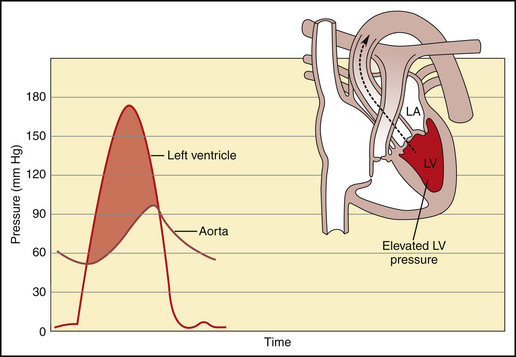12 CASE 12
The patient has poorly managed hypercholesterolemia and a 10-year history of hypertension.
PHYSICAL EXAMINATION
LABORATORY STUDIES
PATHOPHYSIOLOGY OF KEY SYMPTOMS
The normal function of the aortic valve is to isolate the aortic and left ventricular chambers during ventricular diastole and to open so as not to impede ventricular ejection during ventricular systole. Aortic valve stenosis is a narrowing of the aortic valve so that ventricular ejection is impeded. Aortic stenosis often occurs as a result of calcium deposits on the leaflets of the aortic valve (see Fig. 9-1, p.31).
The symptoms are due to an impaired ability to eject blood from the left ventricle into the aorta. Impaired ventricular ejection, combined with the normal inflow of blood from the left atrium, results in an increased volume in the left ventricle during diastolic filling. The increase in preload causes an increase in left ventricular pressure generation during systole. The increased left ventricular systolic pressure can overcome the resistance caused by the stenotic aortic valve, which allows a partial recovery of left ventricle cardiac output. In patients with this disease, left ventricular systolic pressures are much higher than aortic systolic pressures and there is a pressure gradient across the aortic valve throughout systole (Fig. 12-1).
< div class='tao-gold-member'>
Stay updated, free articles. Join our Telegram channel

Full access? Get Clinical Tree



